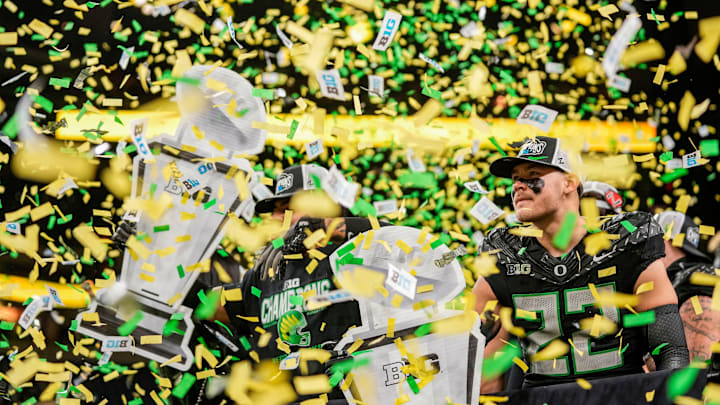According to On3 Sports, Oregon is one of the top spenders in college football, behind only Texas, Texas Tech and Ohio State, ahead of Texas A&M, Miami and USC.
The Ducks have invested in their roster. They have one of the most well-compensated coaching staffs in the game, which is rapidly becoming a business.
Utah coach Kyle Whittingham told Joe Coles of the Deseret News, “We got teams spending supposedly $50 million or more on players, and that’s five, six times what we got.”
The spending has gotten outrageous as teams compete for top players while trying to stay within the $20.5 million revenue-sharing ceiling and working around the new NIL rules and the NIL Go clearinghouse, whose stated mission is to see that deals over $600 reflect a valid business purpose rather than pay-for-play.
NEW: Top 10 Biggest Spenders in College Football this season💰
— On3 (@On3sports) July 15, 2025
(Survey via @PeteNakos_) https://t.co/KSq2X85KFe pic.twitter.com/B6YylQ1djM
This being America, those new NIL restrictions will be tested in court. It's hard to see how the NCAA can successfully restrict an athlete's earnings without some kind of collective bargaining agreement, and the attempt to do so comes dangerously close to admitting athletes are employees.
This being America, when costs rise, prices go up. That means fans have to pay more for tickets. According to a survey by "Soaring to Glory," Oregon has the fourth-highest season ticket prices in the country, behind only Georgia, Alabama and Ohio State.
Reporter Michael Collins wrote, " $1,850 will get you some pretty decent corner end zone seats. There are a couple of sets in the "last tickets" category for around $1,100." There's a strong correlation between the cost of the roster and the cost of a ticket.
The main reason college football is profitable… TV money.
— Adam Breneman (@AdamBreneman81) July 12, 2025
Ticket sales and concessions don’t come close.
Every massive coaching contract you see?
Funded by media rights.
TV runs the sport - without it, none of this works. ⬇️ pic.twitter.com/rldBNjSFim
TV money is reaching its theoretical maximum, especially as the tumult and chaos on the business side threatens to decrease interest in the sport. Fans are turned off by the megadeals, bidding wars and holdouts. It drives the history and tradition into the background.
Unlimited, unrestrained free agency creates a lot of extra strain on the budget, especially since athletic directors are tasked to find funding for nonrevenue sports. We're not far from seeing jersey patches, on-field logos and other promotional strategies employed in the race to keep up and pay the bills.
